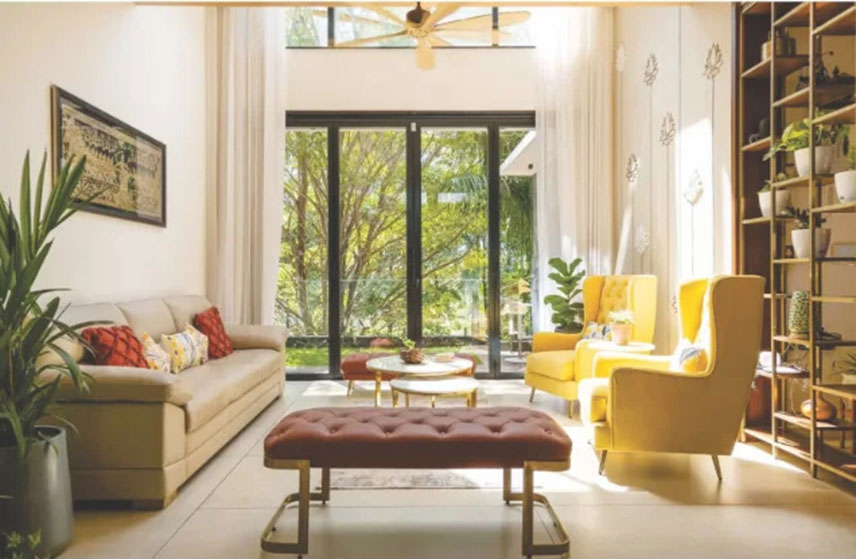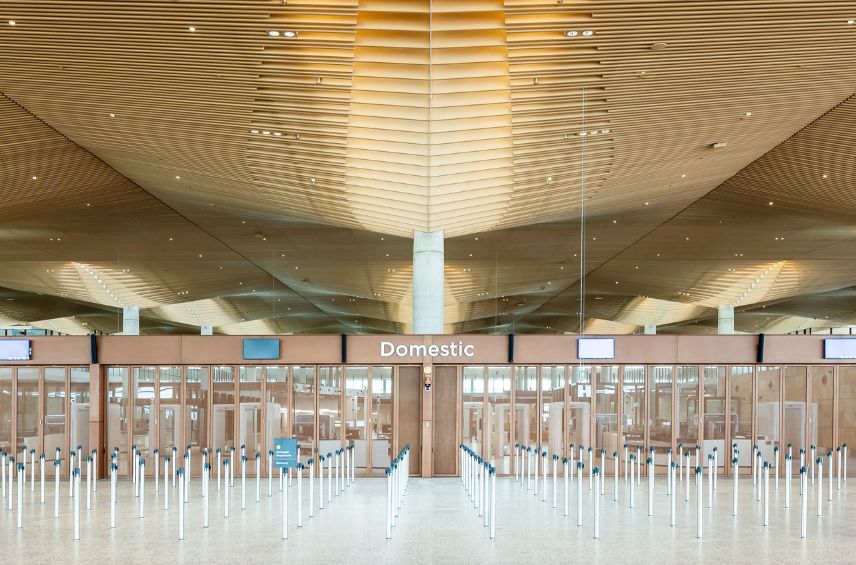Your Guide To Proper House Ventilation Design
A breath of fresh air can do wonders for your health. Take a look at a few recommendations to get you started with house ventilation designs.
Indoor spaces need good ventilation to stay fresh and healthy. Proper ventilation design ensures a steady flow of air, reducing stuffiness and removing pollutants. It not only improves air quality but also enhances comfort and well-being in your home. In this guide, you’ll learn the top tips for designing effective ventilation in your house, making your living space fresher and healthier.
Meaning of Ventilation
Ventilation means letting indoor and outdoor air flow in and out. Without good ventilation, a sealed house can trap harmful pollutants like carbon monoxide and moisture that can cause damage.
Types Of House Ventilation
There are three main types of home ventilation:
- Natural Ventilation
This happens when outdoor air flows in through windows, doors, or gaps in the home. It’s the oldest method and is still common in older houses.
- Spot Ventilation
This uses localised fans, like those in range hoods over stoves or bathroom exhaust fans, to remove pollutants and moisture from specific areas quickly. It’s often used alongside natural ventilation to improve airflow.
- Whole-House Ventilation
This involves using fans and duct systems to either exhaust stale air or bring fresh air into the entire house. These systems can be exhaust-only (relying on leaks for fresh air), supply-only (relying on leaks to remove stale air), or balanced (combining both exhaust and fresh air intake). They ensure consistent ventilation throughout the entire home.
- Exhaust-Only Ventilation
Uses fans in places like kitchens and bathrooms to pull out stale air.
Balanced Ventilation
Uses both exhaust fans and supply fans or inlets to keep a steady air flow. This helps maintain consistent air pressure and saves energy.
Heat Recovery Ventilation (HRV)
This system captures heat from the air leaving your home and transfers it to the incoming fresh air. It helps reduce heating energy costs.
Importance Of Ventilation
- Having good ventilation in new homes is more important now than ever before. With increased pollution, crowded cities, and fewer green spaces, it’s crucial to improve ventilation systems in new constructions.
- Ventilation helps remove moisture, smoke, cooking smells, and indoor pollutants from your home. Without proper ventilation, gases from appliances like stoves and fireplaces can build up and pose health risks.
- When building your home, it’s essential to consider different ventilation options to ensure fresh, high-quality air indoors. A good ventilation system also helps control attic heat, reduces dampness in closed spaces and basements, and prevents moisture from damaging uninsulated walls.
- Placing windows strategically to promote airflow, using kitchen chimneys and exhaust fans, and installing bathroom exhaust fans are all important for effective ventilation. This not only keeps the air moving smoothly but also maintains a healthy environment indoors.
- Excessive moisture can lead to mould growth, damage insulation, and even cause structural problems. High humidity levels can also increase cooling costs. Proper ventilation, including ductwork and exhaust fans, helps remove harmful gases and prevents moisture buildup. Taking these steps ensures your home remains comfortable and safe for years to come.
Design Considerations
- Climate: In colder climates, Heat Recovery Ventilators (HRVs) are beneficial, while warmer climates may focus on natural ventilation and exhaust fans.
- House layout: Plan airflow paths so that fresh air can enter through living areas and move towards exhaust points like kitchens, bathrooms, and laundry rooms.
- Window placement: Position windows on opposite walls to encourage cross-ventilation. Consider factors such as the direction of sunlight and prevailing wind.
- Ducts (if applicable): If using mechanical systems with ducts, ensure they are properly sized and insulated to minimise noise and heat loss.
- Fan selection: Choose fans that match the room size and consider their noise levels to maintain comfort.
Expert Help
Housing construction has very specific rules and regulations. By law, you must get a building permit and follow all the laws and regulations connected to design and construction before you can begin work on your project. Construction requires qualified and capable personnel to do the job. Construction requires qualified and capable personnel to carry out the job. Consequently, a chief designer in charge of a house ventilation design, for example, must be hired.
FAQs
- What's the difference between natural and mechanical ventilation?
Natural ventilation uses windows and doors for airflow. Mechanical ventilation uses fans and ducts to move air.
- Which type of ventilation is best for my house?
It depends on climate, house layout, and budget. Natural might suffice for mild temperatures, while mechanical systems are better for extreme climates or limited natural options.
What does balanced ventilation mean?
- It uses exhaust fans along with supply fans or inlets to bring fresh air in, maintaining constant air pressure and improving efficiency.
- How does Heat Recovery Ventilation (HRV) work?
HRVs capture heat from outgoing air and transfer it to incoming fresh air, reducing heating costs.
- How does climate affect ventilation design?
Colder climates benefit from HRVs to retain heat, while warmer climates might prioritise natural ventilation and exhaust fans.
- Why is proper attic ventilation important?
It prevents moisture buildup, mould growth, and overheating in the attic space.

-webp.webp)




-webp.webp)






.jpg)
.jpg)




